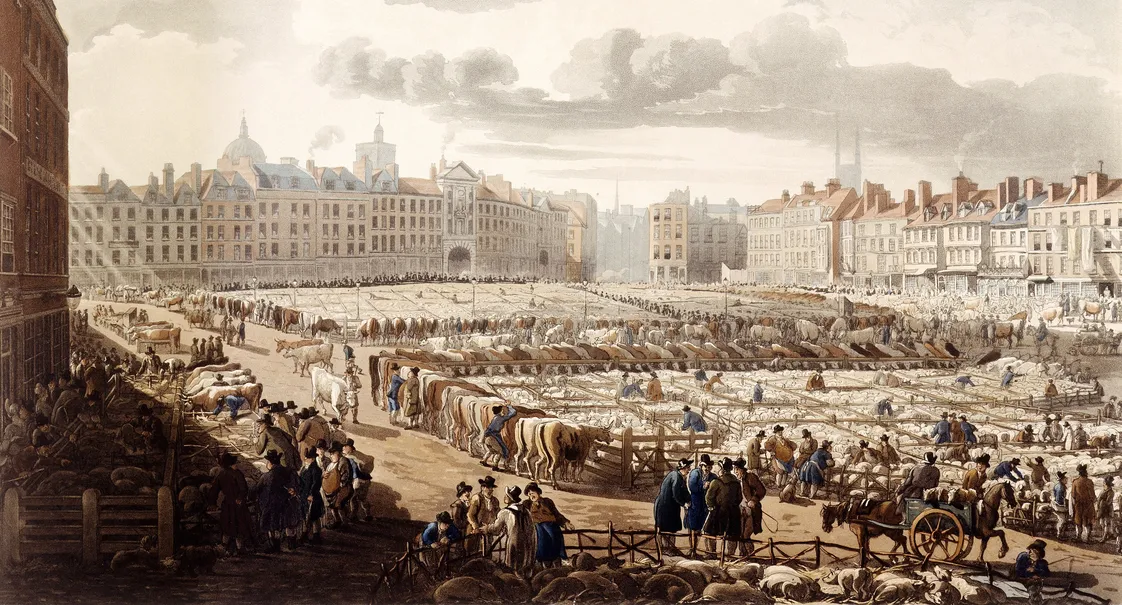09 August 2018 — By Roy Stephenson
The religious history of Smithfield
Once surrounded by influential monastic houses, the iconic location of Smithfield still bears tangible remnants that continue to shape the area’s character and streetscape in modern times.

Smithfield has been an important site in London for over 1,000 years: just outside the city walls, with a convenient grassy field and access to the River Fleet, it became the site of London’s livestock markets.
From monks to meat markets
For many centuries, Smithfield or the ‘Smoothfield’, would have has a distinctive perimeter of religious houses. Immediately to the north was the Augustinian nunnery St Mary Clerkenwell, founded in 1144. To the south, the Augustinian St Bartholomew’s Priory and Hospital, founded in 1123 by the cleric Rahere, in thanks for his recovery from illness on a pilgrimage to Rome. The modern Bart’s Hospital, as we know it today, can trace its lineage to this point, and Smithfield could be regarded as the origin of the hospital system in Britain – all the way to the National Health Service today.
Beyond St Mary Clerkenwell was St John Clerkenwell, the priory of the Monastic Order of the Knights Hospitallers of St John of Jerusalem. Later in the 14th century to the east was Charterhouse, a Carthusian Priory where the inmates lived solitary lives in separate cells.
A lay of the land
Perhaps we can imagine standing in Smithfield at this time, in the late 1300s – the wide ‘smooth Field’ is almost surrounded by the substantial perimeter boundaries of these houses. To the south is a way to Newgate, one of the great gates of the City of London. To the west, is the river Fleet and beyond, on the far bank, the Palace of Bishop of Ely.
“This landscape of religious houses was dissolved at the Reformation”
This landscape of religious houses was dissolved at the Reformation, between 1530 and 1570. But there are tangible monastic remains and influences, and they still dictate how the area feels to a certain degree.
Although modified and changed over the years, the most substantial are the remains of Charterhouse, used as a Tudor mansion, a school and an alms house, and still the home to 40 brothers. The influence of Barts is huge: the church remains, and there is suggestion of the cloister, but the hospital grew to become a major presence in Smithfield, and a watch word in the world of medicine.
St John Clerkenwell exists as the gatehouse to the precinct which is part of the museum of St John. The Order of Knights of St John lives on as the St John Ambulance Service. St Mary’s Clerkenwell has left its name to a parish church. All of these monastic houses have left their mark on the streetscape of modern London.
Roy Stephenson is Historic Environment Lead at London Museum.







